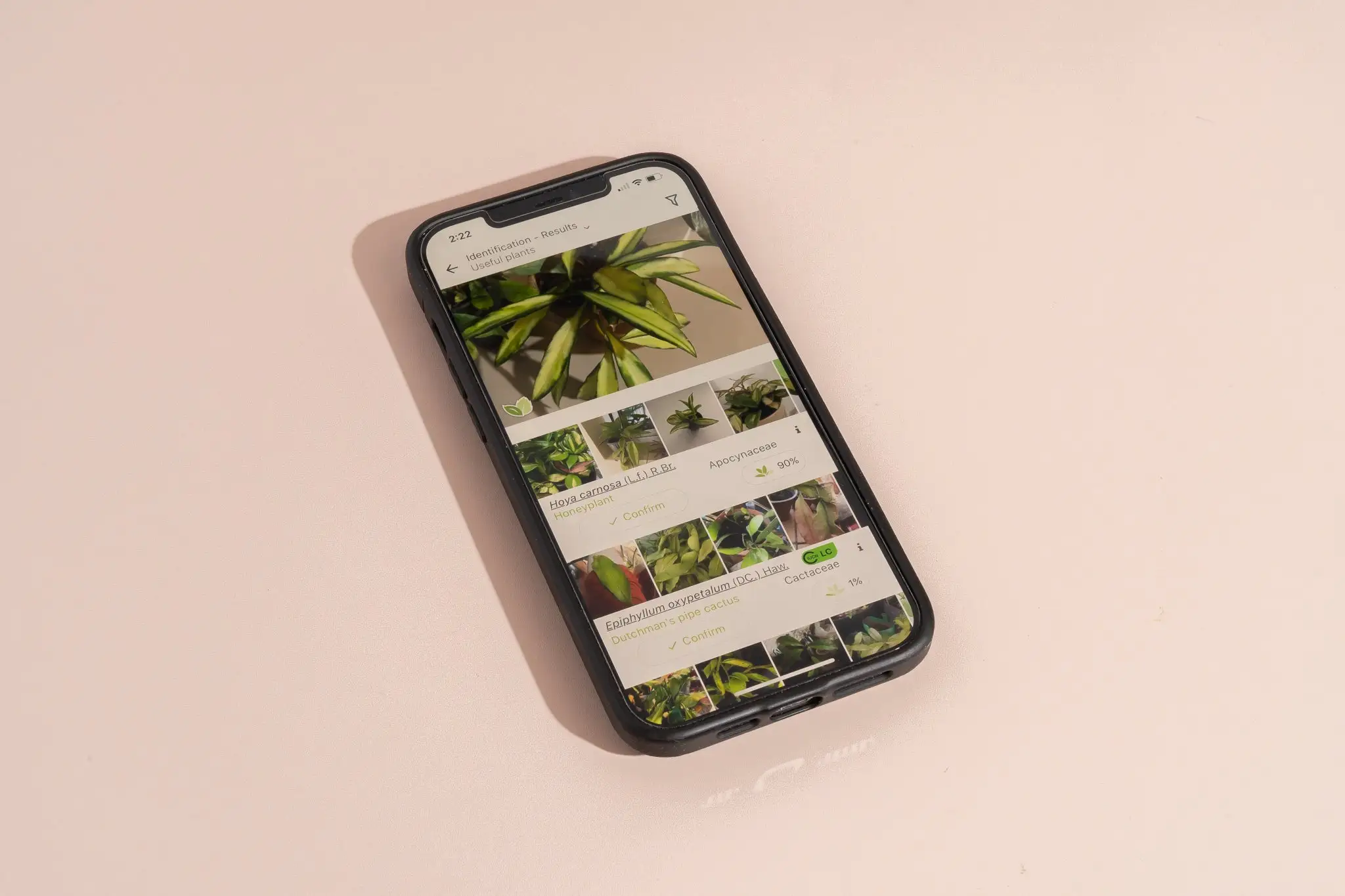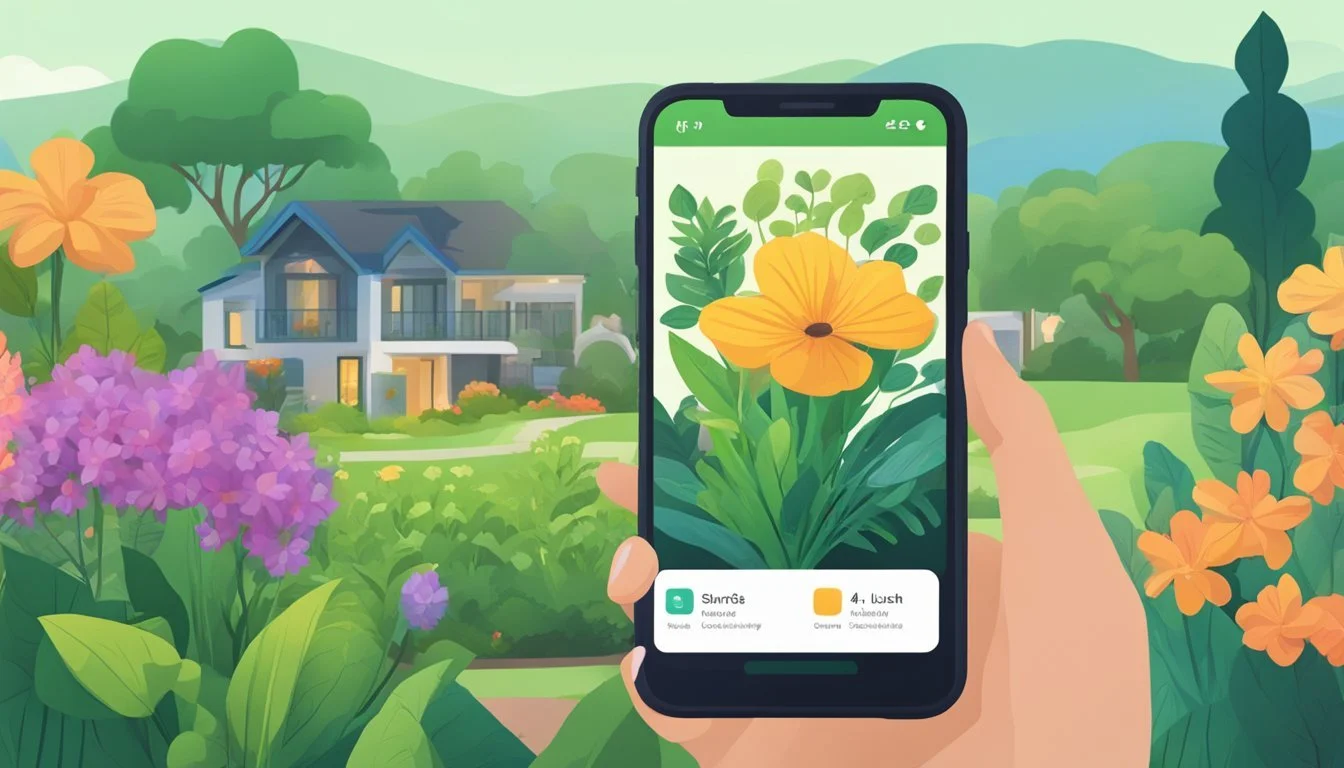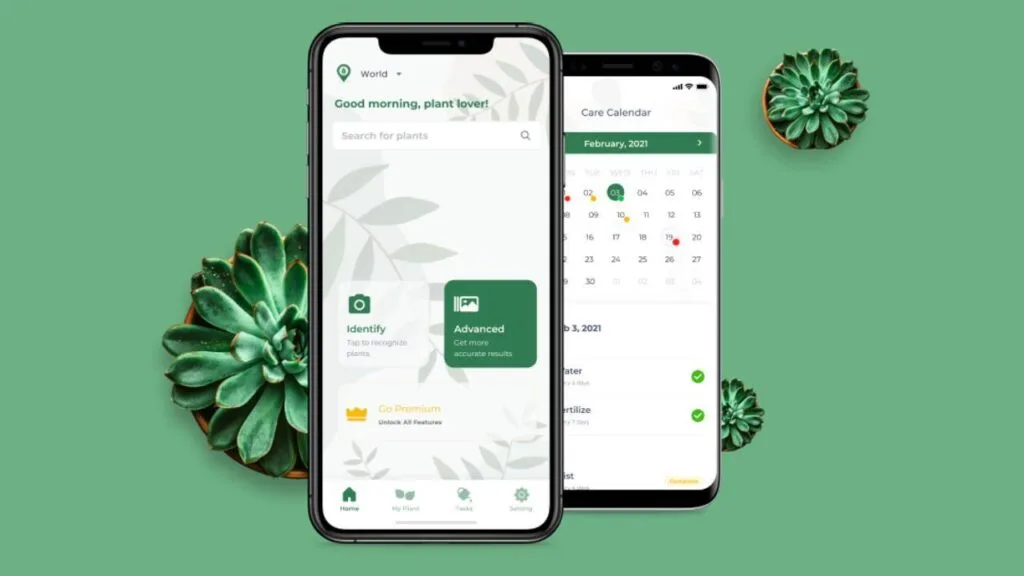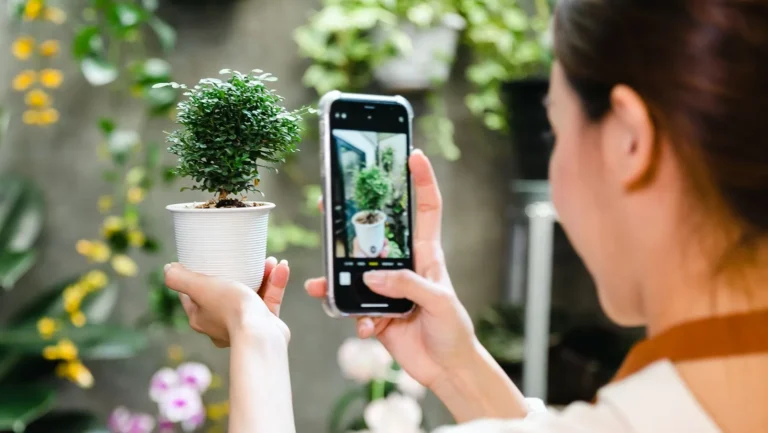Contents
Introduction
Indoor gardening has taken off in recent years, with more people bringing a touch of green into their homes. From vibrant orchids to hardy succulents, houseplants add life and color to any space. But here’s the catch: knowing how to care for these plants can be a bit tricky, especially if you’re not familiar with their specific needs.
This is where identifying your plants becomes crucial. Imagine you’ve just brought home a beautiful new plant, but you’re not sure if it needs bright light or just a little bit of water. Misidentifying your plant could lead to overwatering, underwatering, or not giving it enough light—all of which can stress your plant out and even lead to its demise. That’s why getting the right ID on your plants is essential for keeping them healthy and thriving.
Now, here’s the good news: technology is here to help! Plant identification apps are a game-changer for both newbie and seasoned plant enthusiasts. These nifty apps let you snap a photo of your plant and get instant feedback on what it is and how to care for it. It’s like having a personal plant expert right in your pocket!
In this guide, we’ll dive into how these apps work and how you can use them to keep your indoor garden looking fabulous. Whether you’re trying to figure out if your new green friend is a spider plant or a snake plant, or if you need tips on how to keep it happy, plant identification apps have got you covered. So, let’s get started and turn you into a plant pro!
Understanding Plant Identification Apps
Let’s face it: plants can be confusing. With so many different types, each with its own quirks and care requirements, it’s easy to feel lost when trying to figure out what you’ve got in your home. That’s where plant identification apps come in. They’re like having a knowledgeable friend who knows all about plants and can help you out with just a snap of your camera.

What Are Plant Identification Apps?
Plant identification apps are smart tools designed to help you figure out what plant you’re looking at. You might be wondering how these apps actually work. Well, it’s pretty cool—these apps use technology, like artificial intelligence and machine learning, to analyze the photo you take of your plant. They compare it to a huge database of plant images and give you a pretty good guess on what your plant might be.
Popular Plant Identification Apps
There are several great plant identification apps out there, each with its own special features:
- PlantSnap: Known for its extensive plant database, PlantSnap can identify thousands of species. It also offers useful care tips and information about each plant.
- PictureThis: This app is user-friendly and offers detailed care instructions. It’s great for beginners who need a bit more guidance.
- iNaturalist: While not solely a plant ID app, iNaturalist is excellent for plant identification and connects you with a community of plant lovers and experts.
Each app has its strengths, so you might want to try a few to see which one you like best.
How Plant Identification Apps Work
Using a plant identification app is usually pretty straightforward. Here’s a quick rundown of the process:
- Take a Photo: Open the app and take a clear, close-up photo of your plant. Good lighting and a focused image will help the app make a more accurate identification.
- Upload the Photo: Upload your photo to the app. Some apps might ask you to specify which part of the plant is in the picture, like the leaves or flowers.
- Get Results: The app will compare your photo to its database and provide you with a possible match. It might also give you care tips or additional information about the plant.
Keep in mind that while these apps are incredibly handy, they’re not perfect. Sometimes, especially with rare or similar-looking plants, the app might not be 100% accurate. It’s a good idea to double-check the results with other resources or experts if you’re unsure.
Plant identification apps can be a fantastic tool to help you understand your indoor garden better and ensure your plants get the care they need. So grab your phone, download an app, and start exploring the wonderful world of indoor plants with confidence!
Step-by-Step Guide to Using Plant Identification Apps
Using plant identification apps is a breeze once you get the hang of it. Here’s a simple, step-by-step guide to help you make the most out of these handy tools and get accurate results for your indoor plants.

Choose the Right App for Your Needs
First things first: pick the plant identification app that suits you best. Different apps offer different features, so think about what you need. Are you looking for a user-friendly app with lots of plant care tips, or do you want one with a huge database of plant species? Some apps are free, while others have premium features that you might find useful. Do a bit of research or read some reviews to find the app that feels right for you.
Capture a Clear Photo of the Plant
To get accurate results, your photo needs to be clear and focused. Here are a few tips to snap the perfect shot:
- Lighting: Good lighting is key. Natural light works best, so try to take the photo during the day when there’s plenty of light. Avoid direct sunlight as it can create harsh shadows.
- Focus: Make sure the plant is in focus. A blurry photo might confuse the app and lead to inaccurate results.
- Angle: Take photos from different angles, especially if the plant has distinct features like unique leaves or flowers. Some apps might ask for close-ups of specific parts.
Upload the Photo to the App
Once you’ve got your photo, it’s time to upload it to the app. Open the app, follow the instructions to upload your image, and make sure you select any options if prompted (like which part of the plant is shown). This step is usually straightforward, and most apps will guide you through it.
Review and Confirm the App’s Results
After you upload your photo, the app will analyze it and give you a possible match. Here’s how to handle the results:
- Check the Match: The app will show you a list of potential plant names. Take a look and see which one seems to match your plant.
- Verify: To be extra sure, cross-check the results with other sources like gardening books, online plant databases, or even local plant experts. Sometimes, multiple sources can help confirm the ID.
Save and Document Your Identified Plants
Once you’ve identified your plant, save it in the app’s library or your plant care journal. This is a great way to keep track of your plants and their needs. Some apps allow you to add care notes, set reminders for watering, and even track the plant’s growth. Keeping a record helps you stay organized and ensures you’re giving each plant the care it requires.
With these steps, you’ll be using plant identification apps like a pro in no time. It’s a fun and easy way to learn more about your indoor plants and ensure they’re getting the best care possible. So, grab your phone, take that snapshot, and let the app do the rest!
Maximizing the Use of Plant Identification Apps
Once you’ve got the basics down, you can start exploring how to get the most out of your plant identification app. These apps are more than just tools for identifying plants—they offer a range of features that can enhance your indoor gardening experience. Here’s how to make the most of them:
Explore Additional Features
Many plant identification apps come with extra features that go beyond just naming your plant:
- Plant Care Tips: Look for apps that offer detailed care instructions for each plant. These can include watering schedules, light preferences, and tips for preventing common problems.
- Watering Reminders: Some apps let you set reminders for when to water your plants. This can be a lifesaver if you have a lot of plants and want to make sure none of them are neglected.
- Community Forums: Apps with community features allow you to connect with other plant lovers. You can ask questions, share tips, and get advice from experienced gardeners.
Building a Plant Care Routine
Once you’ve identified your plants and know their needs, you can use the app to build a care routine:
- Organize Your Plants: Many apps let you create a virtual garden where you can track each plant’s specific care requirements. You can organize them by type, location, or care needs.
- Set Reminders: Use the app to schedule reminders for watering, fertilizing, and repotting. Keeping a regular care routine helps your plants stay healthy and vibrant.
Engage with the Community
Engaging with the app’s community can be incredibly beneficial:
- Share Your Experiences: Post photos and updates about your plants to get feedback and advice from others. You might pick up new tips or discover solutions to problems you’re facing.
- Participate in Challenges and Events: Some apps host plant-related challenges or events that can be a fun way to engage with fellow enthusiasts and learn more about plant care.
Troubleshooting Common Issues
Sometimes, things don’t go as planned, and that’s okay! Here’s how to tackle some common issues:
- Misidentification: If the app gives you a result that doesn’t seem right, try taking another photo from a different angle or in better lighting. You can also use multiple apps to cross-check results.
- Poor Photo Quality: If your photos are coming out blurry, ensure you have good lighting and hold your camera steady. Most apps provide tips on how to improve photo quality.
Using plant identification apps to their full potential can make managing your indoor garden easier and more enjoyable. By exploring all the features, setting up a solid care routine, and connecting with the community, you’ll be well on your way to becoming a plant care expert. Enjoy the journey and happy gardening!
Pros and Cons of Using Plant Identification Apps
Plant identification apps are fantastic tools, but like anything, they come with their own set of advantages and disadvantages. Understanding these can help you make the most of these apps while being aware of their limitations.

Advantages
- Ease of Use: One of the biggest perks is how easy these apps are to use. With just a snap of your camera, you can get instant feedback on what plant you’re dealing with. This convenience is a huge time-saver, especially if you’re not familiar with all the different plant species.
- Access to a Vast Database: Plant identification apps typically have extensive databases filled with thousands of plant species. This means you have a wealth of information right at your fingertips, which can help you identify a wide variety of plants quickly.
- Integrated Care Tips: Many apps go beyond just identifying plants—they also provide care instructions. This feature is incredibly helpful for keeping your plants healthy, as you’ll get specific advice on watering, lighting, and other care requirements.
Disadvantages
- Potential Inaccuracies: While these apps are pretty advanced, they’re not perfect. Sometimes they might misidentify a plant, especially if it’s rare or if the photo isn’t clear. Misidentifications can lead to confusion about how to care for your plant correctly.
- Dependence on App Quality: The effectiveness of a plant identification app can vary based on its quality and how frequently it’s updated. Some apps might not have the latest plant data or might struggle with identifying less common species.
- Over-Reliance on Technology: Relying too heavily on apps can sometimes mean you miss out on learning about plants in a more traditional way. It’s important to balance using technology with hands-on experience and learning from other sources.
Overall, plant identification apps are valuable tools for any indoor gardener, offering convenience and a wealth of information. Just be mindful of their limitations and use them as part of a broader approach to learning about and caring for your plants. With the right balance, these apps can help you become a more knowledgeable and confident plant owner.
Conclusion
Plant identification apps are game-changers for indoor gardening enthusiasts. They make it easier than ever to identify your plants, learn about their needs, and keep them thriving. Here’s why these apps are such a fantastic addition to your gardening toolkit:
Summarizing the Benefits
Using plant identification apps can significantly enhance your indoor gardening experience. By simply taking a photo, you can quickly find out what plant you have and get detailed care instructions. This means you’ll have the knowledge you need to provide the right environment and care for each plant, helping them grow healthy and strong. The convenience of having instant plant identification and care tips at your fingertips can make your gardening journey smoother and more enjoyable.
Encouraging Continuous Learning
While plant identification apps are incredibly useful, they’re just one part of the gardening puzzle. To truly become a plant care expert, it’s important to continue learning. Use the apps as a starting point and supplement them with other resources like gardening books, local plant nurseries, and online forums. Engaging with a community of plant lovers and experimenting with different care techniques will deepen your understanding and help you tackle any challenges that come your way.
Incorporating plant identification apps into your gardening routine can be both fun and educational. They’re a great way to start learning about your plants and keeping them in top shape. So, grab your phone, start snapping those plant photos, and enjoy the journey of indoor gardening with a little help from technology!



